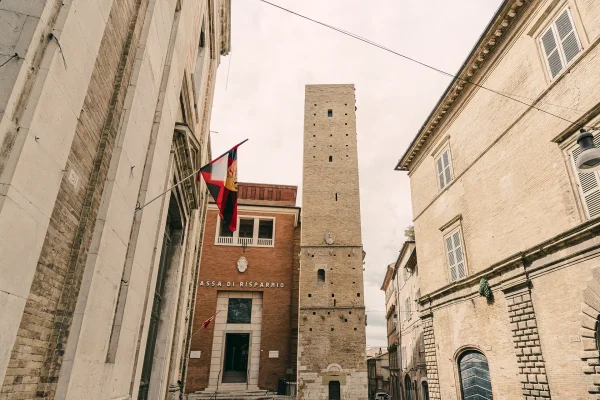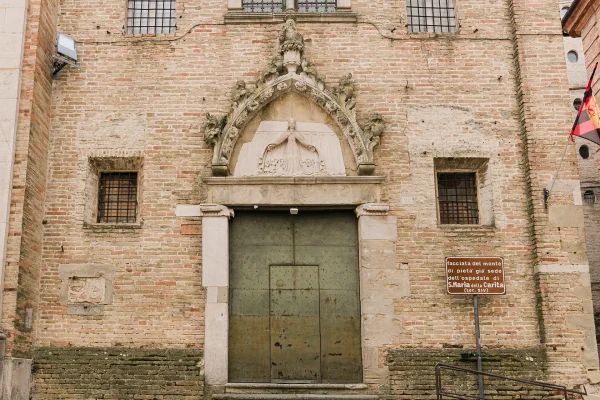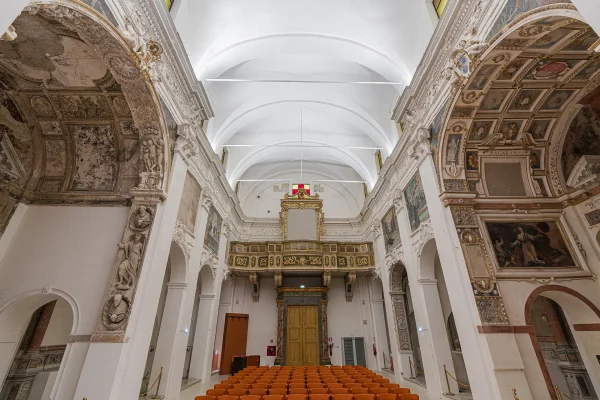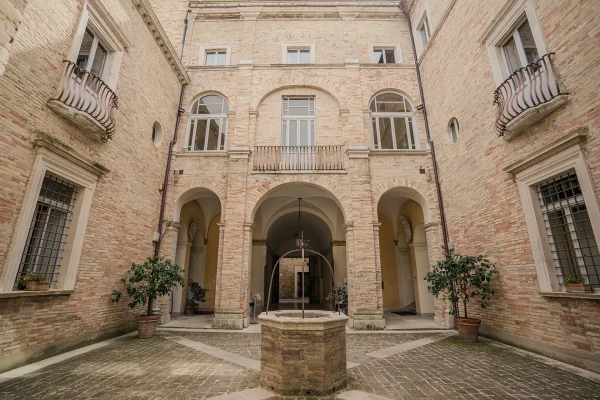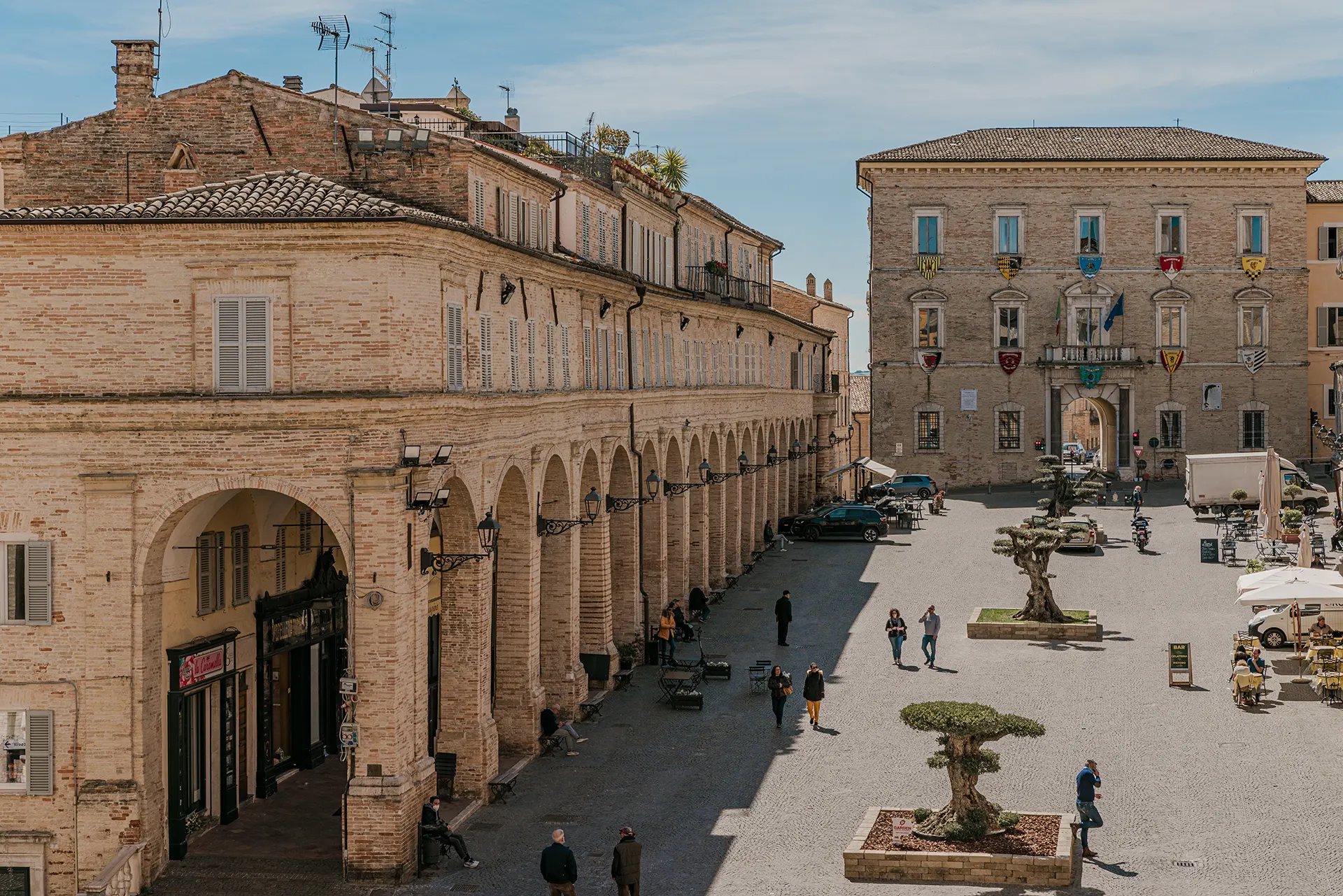
The street of ancient
From Piazza del Popolo to the Church of St Philip Neri
Corso Cefalonia and Corso Cavour constitute the main artery of Fermo’s historic centre: in fact, from as early as the Middle Ages, this street was the only one that could be travelled by carriage to reach Piazza del Popolo. Called “via delle botteghe” (or street of workshops) until the 19th century due to its prevalent commercial vocation, from the 16th century it became home to splendid aristocratic palaces without, however, losing its economic vocation. In fact, the city’s economic activities continued to exist on the ground floor level.
Among the most historically and artistically- interesting buildings is Palazzo Azzolino, built for Marquis Giovan Francesco Rosati on a design by Antonio Cordino. Also known as Antonio da Sangallo the Younger, the latter was one of the most outstanding architects of the Renaissance period. After some time, the house became the property of Cardinal Decio Azzolino the Younger, Secretary of State under Pope Clement IX, patron and faithful confidant of Queen Christina of Sweden. The façade is divided into two different orders by a stringcourse. The lower part is instead punctuated by five large arcades and the upper part has five architrave windows. The courtyard, porticoed on its longer sides, has an octagonal well in the centre.
Along this key road axis, there are several religious sites. The first encountered is the Church of Santa Maria del Carmine, built around the mid-14th century and rebuilt in the late-18th century, with a majestic brick and travertine façade.
Next to it is the beautiful Gothic portal of the Hospital of St Mary of Charity, built around 1341 with the purpose of offering shelter to outsiders, pilgrims and abandoned children. This is referred to by the white Istrian stone sculptural relief portraying Our Lady of Mercy protecting a large group of needy people under her large cape. The scene is enclosed in an ogival frame decorated with Gothic leaves resembling tongues of fire, culminating in the bust of the Almighty portrayed in the act of blessing. Around 1522, the structure was replaced by the Monte di Pietà (Mount of Piety), which was set up to grant small loans to people, exchange for a pledge, in order to combat the spread of usury.
At the crossroads of Corso Cefalonia and Corso Cavour stands Matteucci Tower, the only surviving noble tower in Fermo. Built in the 12th century, in the 16th century it became the property of the eponymous family, whose coat of arms can be seen on the main façade. According to legend, Mihirimah Sultan, daughter of Suleiman the Magnificent, was segregated inside. The woman had been kidnapped in Corfu in 1542 by Saporoso Matteucci, a great leader of the Fermo noble family. Devoid of battlements and with two small Romanesque doors, it is built in travertine and brick. Arrow loops are visible and before the advent of firearms, were used to strike the enemy at a distance.
Continuing along the road leads to 17th-century Palazzo Paccarone, recognisable thanks to the elegant rusticated ashlar in the centre of the façade. This element makes it unique in the Fermo landscape. Also interesting is the portal that seems to be made of stone, but on closer inspection is actually made of wood. After being purchased by the municipality, it first housed Fracassetti Business School, then the music Conservatory and finally, the university. Today, it has a dual purpose: it houses both the Law Courts and the Science Museum.
Just opposite Palazzo Paccaroni is the Church of St Philip Neri, whose construction began when the ecclesiastic was still alive. Consecrated in 1607, the religious building stands on the remains of a 14th-century church dedicated to the Holy Spirit and is one of the earliest and most significant prototypes of the settlement of reformed congregations in the region. It was built with substantial funding from the municipality of Fermo and contributions from local noble families were made to decorate the chapels. The floor plan is in the shape of a Latin cross with an inscribed transept and, with its stuccoes, plasterwork and faux marble, it deserves a prominent place in the context of Marche Baroque. On either side of the nave are six chapels; each one an expression of the wealth of the patrons who showed off their economic well-being by using expensive materials, such as gems and mother-of-pearl, to decorate the altars. The church was enriched by distinguished works of pictorial art, such as The Pentecost Altarpiece and The Eternal by Giovanni Lanfranco. However, the most prominent among these was the prestigious Adoration of the Shepherds, the only work by Pieter Paul Rubens in the Marche; all of these have now been transferred to the Art Gallery. Today, the church is used as an auditorium and is also a venue for temporary exhibitions.


